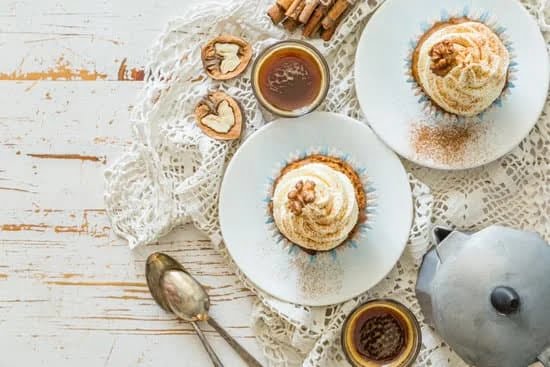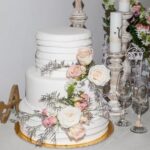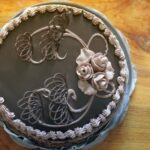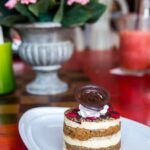The holiday season is just around the corner, and what better way to set the festive mood than with beautifully crafted decorative Christmas cakes? These delightful desserts not only add a touch of warmth and joy to any gathering but also serve as a delicious centerpiece for your holiday table. In this article, we will delve into the world of decorative Christmas cakes, from their rich history to tips on how to create stunning designs at home.
Christmas cakes have a long-standing tradition that dates back centuries, and over time, they have evolved into an art form of their own. From traditional fruitcakes laden with symbolic ingredients to modern fondant creations, there is no limit to the creativity that can be expressed through these festive treats. In this section, we will explore the origins of Christmas cakes and how they have become synonymous with the holiday season.
Whether you’re a seasoned baker or new to the world of cake decorating, there are endless possibilities when it comes to creating decorative Christmas cakes. From classic designs to contemporary styles, there is something for everyone to enjoy.
Join us as we take a closer look at the different types of decorative Christmas cakes and gather expert advice on how to achieve stunning results in your own kitchen. Let’s embark on this delightful journey of indulgence and creativity as we prepare for the most wonderful time of the year.
The History of Christmas Cakes
The tradition of Christmas cakes dates back to ancient Roman times, where people would celebrate the winter solstice with fruitcake. The addition of spices and dried fruits symbolized the hope for a prosperous growing season in the coming year. As Christianity spread across Europe, this tradition evolved into what we now know as Christmas cakes.
In the 16th century, oatcakes were also a popular choice for Christmas. These were made with oats and formed into a large cake-like shape. It wasn’t until the late 1800s that the traditional fruitcake as we know it today became popular in England, with its rich ingredients like dried fruits, nuts, and spices. The cake was often topped with marzipan and royal icing, symbolizing purity.
Over time, different countries have developed their own versions of Christmas cakes. In Japan, for example, it is not uncommon to find decorative Christmas cakes made with sponge cake layers filled with whipped cream and decorated with strawberries. In Italy, panettone is a traditional sweet bread that is often enjoyed during the holiday season.
Despite variations in ingredients and styles, one thing remains constant: the act of sharing these decorative Christmas cakes with loved ones is an integral part of holiday celebrations around the world.
| Christmas Cake History | Details |
|---|---|
| Ancient Roman times | Celebration of winter solstice with fruitcake |
| 16th century | Popularity of oatcakes for Christmas |
| Late 1800s | Traditional fruitcake becomes popular in England |
| Today | Variations in different countries’ versions of Christmas cakes |
Types of Decorative Christmas Cakes
When it comes to decorative Christmas cakes, there is a wide range of styles and designs to choose from that can truly capture the festive spirit. From traditional fruitcakes to modern fondant creations, each type of cake brings its own unique charm to holiday celebrations. Let’s explore the various styles and designs of decorative Christmas cakes and how they have evolved over time.
Traditional Fruitcakes
The tradition of fruitcake dates back centuries, with recipes varying across different cultures. This type of Christmas cake is typically made with candied fruits, nuts, and spices, and often soaked in alcohol for added flavor. The dense texture and rich taste of traditional fruitcakes have become a beloved part of holiday traditions for many families.
Modern Fondant Creations
In recent years, fondant has gained popularity as a versatile medium for creating stunning decorative Christmas cakes. This smooth icing allows for intricate designs and elaborate decorations that can transform a simple cake into a work of art. From sculpted figures to intricate patterns, fondant opens up endless possibilities for creative expression during the holiday season.
Other Styles and Designs
In addition to traditional fruitcakes and modern fondant creations, there are countless other styles and designs of decorative Christmas cakes to explore. Some may prefer classic sponge cakes adorned with festive toppings, while others may opt for unconventional flavors like red velvet or gingerbread. Whether it’s a tiered masterpiece or individually decorated cupcakes, the variety of options allows for personal preferences to shine through in every slice.
As the tradition of decorative Christmas cakes continues to evolve, bakers have found new ways to blend classic elements with modern techniques. Whether it’s through innovative flavors or elaborate decorations, each style and design contributes to the joyous atmosphere of the holiday season.
Tips for Decorating Christmas Cakes
Decorating a Christmas cake can be a fun and rewarding experience, but it can also be quite challenging. With the right tips and techniques, you can achieve stunning results at home that will impress your family and friends. Here are some expert tips for decorating Christmas cakes:
- Prepare Your Cake: Before you even begin decorating, make sure your cake is properly prepared. This includes leveling the top, applying a crumb coat of frosting, and allowing it to set before adding more decorations.
- Use the Right Tools: Invest in good quality decorating tools such as piping bags, tips, offset spatulas, and fondant smoothers. These tools will make the decorating process much easier and give you more professional-looking results.
- Get Creative with Flavors: Consider incorporating unique flavors into your Christmas cake such as peppermint, eggnog, or gingerbread. These unexpected tastes can add an extra layer of festivity to your creation.
Decorative Christmas cakes are not only delicious but also serve as eye-catching centerpieces during holiday gatherings. By following these tips, you can elevate your cake decorating skills and create a masterpiece that will be the talk of the party.
Remember to take your time and enjoy the process – after all, creating beautiful Christmas cakes is all about spreading joy and love during the festive season. Whether you opt for traditional designs or modern fondant creations, the most important thing is to infuse your own personality into each decorative Christmas cake. With a little practice and creativity, you’ll soon become an expert at crafting stunning desserts that will delight everyone around the holiday table.
The Best Ingredients for Decorative Christmas Cakes
When it comes to creating decorative Christmas cakes that not only look beautiful but also taste delicious, choosing the right ingredients is key. From classic fruitcakes to modern fondant creations, the flavors and fillings you select can make a significant impact on the overall experience of enjoying these festive treats. Here are some essential ingredients to consider when making your own decorative Christmas cake at home:
- Fruit: Dried fruits such as raisins, currants, and candied peel are classic ingredients in traditional Christmas cakes. They add a wonderful texture and sweetness to the cake, as well as a festive touch.
- Spices: Warm spices like cinnamon, nutmeg, and clove are commonly used in Christmas cakes to infuse them with cozy holiday flavors.
- Liquor: Many traditional Christmas cake recipes call for soaking the dried fruits in liquor such as brandy or rum before baking. This adds depth of flavor and helps keep the cake moist.
- Flavorings: Ingredients like vanilla extract, almond extract, or citrus zest can enhance the overall flavor profile of your decorative Christmas cake.
In addition to these key ingredients, the type of flour, sugar, butter, and eggs you use will also have an impact on the texture and taste of your Christmas cake. For those who prefer a more modern approach to decorating their cakes, unique fillings such as flavored buttercream or ganache can provide endless possibilities for creating visually stunning and delicious creations.
Ultimately, the best ingredients for decorative Christmas cakes are those that appeal to your personal tastes and traditions. Whether you stick with classic flavors or experiment with new combinations, the process of choosing and using high-quality ingredients is an essential part of creating a memorable holiday dessert that will be cherished by all who indulge in it.
Creative Ideas for Decorating Christmas Cakes
When it comes to decorating Christmas cakes, the possibilities are endless. Whether you’re aiming for a traditional look or something more modern and unique, there are plenty of creative ideas to explore.
One popular trend in recent years is the use of edible decorations such as sugared cranberries, rosemary sprigs, and even edible gold leaf to add an extra touch of elegance to your festive dessert. Another idea is to incorporate winter wonderland motifs such as snowflakes, pine trees, and polar bears to create a whimsical and enchanting cake.
If you’re looking for inspiration for unique designs and themes for your decorative Christmas cake, consider incorporating classic holiday symbols such as Santa Claus, reindeer, or the Nutcracker. You can also draw inspiration from winter scenes like cozy cabins in the woods or snowy landscapes. For a more modern twist, think about using bold colors like deep reds and greens alongside metallic accents for a contemporary and stylish look.
In addition to traditional fruitcakes and fondant creations, another creative idea for decorating Christmas cakes is to incorporate non-traditional flavors and ingredients. From chocolate peppermint cakes to gingerbread spice layers, there is no limit to the delicious combinations you can create. Don’t be afraid to think outside the box and experiment with unexpected pairings like eggnog frosting with spiced rum-infused cake layers for a truly unforgettable holiday treat.
| Creative Ideas | Examples |
|---|---|
| Edible Decorations | Sugared cranberries, rosemary sprigs, edible gold leaf |
| Winter Wonderland Motifs | Snowflakes, pine trees, polar bears |
| Classic Holiday Symbols | Santa Claus, reindeer, The Nutcracker |
Showcasing Decorative Christmas Cakes
Professional Bakers
Professional bakers are known for their skill and creativity when it comes to crafting decorative Christmas cakes. Many bakeries offer custom cake designs, allowing customers to request specific themes, colors, and even edible decorations. Some popular designs include snowflake-adorned cakes, Santa Claus figurines, and winter wonderland scenes. These professional bakers often use advanced techniques such as fondant molding, airbrushing, and intricate piping to bring their creations to life.
Home Cooks
For home cooks, decorating Christmas cakes can be a fun and rewarding experience. With the rise of social media platforms like Instagram and Pinterest, there is an abundance of inspiration for festive cake designs. Home cooks often experiment with different techniques such as buttercream frosting piping, edible glitter dusting, and simple fondant cutouts. Many enjoy incorporating traditional holiday elements into their designs, such as holly berries, candy canes, and gingerbread house motifs.
Sharing the Joy
One of the most delightful aspects of showcasing decorative Christmas cakes is the joy that comes from sharing them with loved ones. Whether it’s a professionally crafted masterpiece or a homemade creation, these beautiful desserts serve as a centerpiece for holiday gatherings. They not only provide a visual feast but also evoke feelings of warmth and nostalgia.
The act of presenting a stunning Christmas cake demonstrates care and thoughtfulness in celebrating the season with family and friends. It truly becomes a focal point that adds magic to any festive occasion.
Conclusion
In conclusion, decorative Christmas cakes are a delightful way to add an extra touch of magic to the holiday season. Whether it’s a traditional fruitcake adorned with seasonal decorations or a modern fondant masterpiece, these desserts have become an essential part of Christmas celebrations around the world. The history of Christmas cakes is rich and diverse, evolving from ancient traditions to modern trends, making them a symbol of warmth and togetherness during this special time of year.
As we reflect on the best ingredients for decorative Christmas cakes and explore creative ideas for decorating them, it becomes clear that the joy of creating these treats lies in the opportunity for self-expression and creativity. From festive designs to unique themes, there are countless ways to make a statement with your Christmas cakes and showcase your personality and artistic flair.
Whether you’re an experienced baker or just starting out, the process of decorating these cakes can be both rewarding and enjoyable.
Ultimately, decorative Christmas cakes are not just about indulging in delicious sweets, but also about sharing love and joy with friends and family. As we gather around the table during the holidays, these beautiful creations bring people together and create lasting memories. So, whether you’re admiring professional bakers’ stunning creations or trying your hand at decorating your own at home, let’s savor the joy of creating and sharing decorative Christmas cakes with loved ones during this festive season.
Frequently Asked Questions
What Is the Easiest Way to Decorate a Christmas Cake?
The easiest way to decorate a Christmas cake is by using ready-made decorations like edible sugar figures, sprinkles, or festive themed cake toppers. These decorations can easily be placed on top of the icing for a quick and festive finish.
What Type of Cake Is Traditionally Eaten at Christmas Time?
A traditional cake eaten at Christmas time is usually a fruitcake. Fruitcakes are rich, dense cakes filled with dried fruits, nuts, and spices. They are often soaked in alcohol to enhance the flavor and have a long shelf life.
What’s the Difference Between a Fruit Cake and a Christmas Cake?
The main difference between a fruitcake and a Christmas cake lies in their ingredients and preparation. While both may contain similar ingredients like dried fruits and nuts, Christmas cakes typically use additional spices like cinnamon and nutmeg, while fruitcakes focus more on the richness of the fruits and nuts. Additionally, Christmas cakes are often decorated elaborately for the holiday season.

Welcome to our cake decorating blog! My name is Destiny Flores, and I am the proud owner of a cake decorating business named Cake Karma. Our mission is to provide delicious, beautiful cakes for all occasions. We specialize in creating custom cakes that are tailored specifically to each customer’s individual needs and tastes.





